At the end of last winter, I wrote the first of a two part series on how I keep warm. As I enter the grips of winter once more, I thought it was time for part II. The first part was all about my thermostat. If you’ve been following along, you know the thermostat has changed a lot since that post, and it continues to be refined. Today, I will talk about the hardware (furnace and other heaters) and “software” (clothing), and other techniques I employ.
CAMPER EXTERIOR
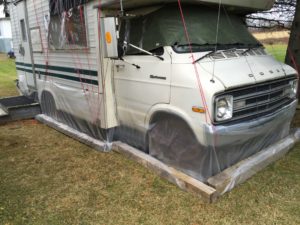
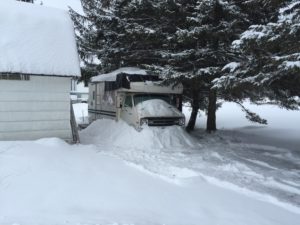
The first line of defense is the camper exterior. Like any home, it’s a battle to keep the cold air out and the warm air in, but to also maintain some ventilation to keep humidity at bay. For me it begins with banking the camper with plastic sheeting. This keeps wind from rushing under the floor. When the snow comes I can bank snow against the plastic. Show is a phenomenal insulator. I line all exterior compartments with standard 3.5 inch loft pink roll insulation (pics below). The camper is covered with tarps. The snow can accumulate above without directly contacting the roof. Keeping the roof dry is preferable. If the snow collected on the exposed roof, and then melted on a warm day, the resulting water will find is way into small spaces. When the cold re-freezes the water, it expands. Suddenly those small spaces become cracks and water leaks.
CAMPER INTERIOR
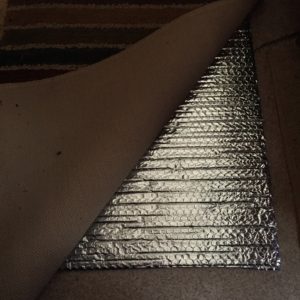
On the inside, I fill vents with pink roll insulation, and then cap that off with 1 inch blue foam board. I also covered the large rear window with blue foam, as well as the windows around the bed. They would be an enormous loss of heat, and I get plenty of light from the two remaining windows. The remaining windows get the standard shrink plastic on the interior. The larger dining area window also gets a custom exterior storm window made from plexiglass against a rubber gasket. I have runner carpets on the floor year round, but for the winter, I place Reflectix insulation under them. This is sold under a number of brand names and styles, but it is basically bubble wrap between two sheets of heat reflective mylar (think space blanket). It adds a level of protection from the cold floor. Finally, a wool blanket hangs in front of the door to help mitigate drafts.
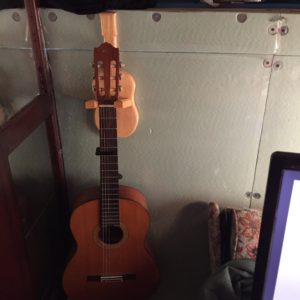
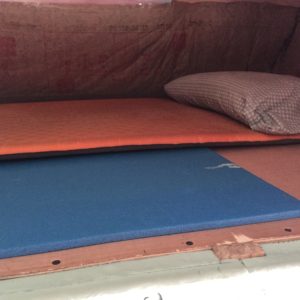
The cab of the camper is a standard van cab. It is not really insulated at all. Rather than try to insulate around such a compound shape, I walled the whole cab off with blue foam board. I do lose that space for interior storage, but I can still access it from outside. The wall does make the space a bit cozier. There’s something about having a steering wheel in your living quarters that doesn’t exactly scream “home”, so I was glad to have it out of sight. The downside here, it that the bed is over the cab. That means that the area under the bed gets VERY cold. I combat this with closed cell foam. The camping section of any decent department store will have closed cell foam camping mats for quite cheap. I have a partial layer of that foam under where my torso lays. I should layer the whole surface, but I’m doing this as cheap as possible. On top of that is a self inflating camping pad that serves as my mattress.
HARDWARE
The interior space of the camper is heated by a propane furnace controlled by my custom built thermostat. I try live as “green” as I can, but a camper is just not an efficient habitat to occupy in such a harsh climate. I do plan on building a very green and efficient small home some day, but until then I do my best with what I have. To make up for the lack of thermal efficiency, I keep the temperature low to save on propane. I’ve discussed this elsewhere, but I’ll recap it here. My base temperature is 40°F. This temperature was chosen a bit arbitrarily as a temperature that would protect against freezing. So it stays 40°F when I am away, if I forget to turn it down before I leave, the motion sensor will do it automatically after an hour without motion. I also set it to 40°F when I go to bed. I sleep quite well there, of course, I have an appropriate sleeping bag. Getting up in the morning in the cold was pretty tough last year, so this year I programmed a delay function into the thermostat. Now, the heat comes on before I wake up. When I’m home, I keep it to 60°F. I splurge on 65°F once in a while.
SOFTWARE
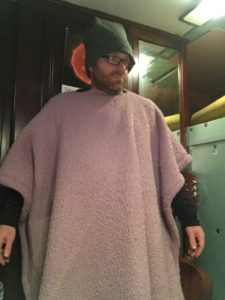
Some people find 60°F to be pretty chilly for an indoor temp. You may agree, and you’d be right. But since each of our bodies is a personal microclimate, it’s easy to rectify with clothing. I always wear a thermal base layer (we call ‘em “Long Johns”). I wear warm fleece sleeping pants, and either a sweater or a hoodie. I also wear a hat and gloves inside. I tend to favor light weight touchscreen gloves so I can interact with utensils, mobile devices, and my Apple Magic Mouse, which is touch based. My hat is one of the ugliest I’ve seen, but it’s made of thick fleece, which has unbeatable heat retention. A fleece throw blanket comes in handy often. One of my most effective garments is a DIY poncho (or serape depending on who you ask). I took a thick fleece blanket, and cut a head hole in the middle. Draped over me, it keeps me warm while retaining the use of my hands. It is WAY more effective than draping a blanket over you. In addition to warming you front and back, the covering of the shoulders makes a great difference in holding body heat. I’m not going to win any fashion awards here. I bet I’d look more stylish in clogs and Hammer pants. In fact, in a mash up of two Clint Eastwood characters, I’ve named this look “The Hobo Josey Wales”. Hey it works. Function over fashion, always!
OTHER STUFF

I’ve just begun experimenting with a small personal ceramic heater. I have avoided using electric heat as a primary source because I currently only have about 15 amps I can safely use, and a heater would take most of that. This small heater uses only 250 watts, and cost me $10. It has zero ability to affect the temperature in the camper as a whole, but is has a purpose in warming hands or feet that tend to get cold easy. I can take the temperature down to 50°F and this heater takes the edge off the cold, as long as I’m mostly stationary.
I also have a portable “Buddy” from Mr. Heater as a back up. It uses 1 pound propane canisters, and I can deploy it in a pinch if need be. It’s not suitable for long periods as it puts a lot of moisture in the air. It’s also old, and it doesn’t seem to want to run for long periods, anyway. It’s nice to know it’s there in an emergency, though.
There are a couple of challenges I face. One is convection. As the camper loses heat to outside it creates a movement of air that feels almost like a draft. This makes it feel colder than it actually is. I also have small humidity issues. Since I have buttoned up the camper as much as I can, I have affected the ventilation. With less ventilation, I lose less heat, but I retain moisture. It’s not a lot, but it’s enough. Cold spots can condense the moisture (sometimes into frost on the metal door and window frames). If I don’t pay attention, the moisture can create black mold. The answer would be a ventilation system that retained my heat (like an energy recovery ventilator), but those systems are beyond my scope and price at the present time. I do plan on incorporating such devices when I build my own place.
CONCLUSION
At the end of the day, the biggest step in overcoming the cold (or anything) is our mind. I believe comfort is largely an illusion (I’ll be writing a post about that). We can choose to adjust our comfort levels, and learn to be comfortable in situations that were previously not so. As long as the condition is not life threatening, comfort is largely subjective. Once we learn to take our perception of comfort down a notch, our perception of luxury falls with it, and we can really begin to appreciate the little things.
Additional Pics:
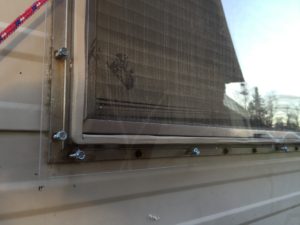
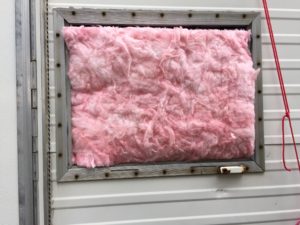
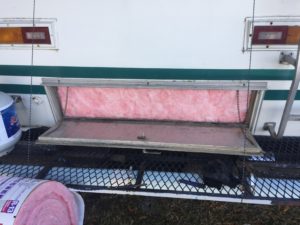
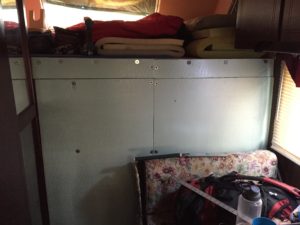
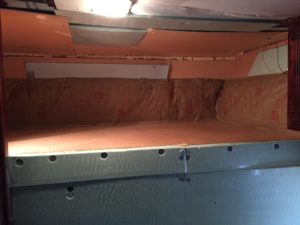

You are one of the smartest people I know and love deeply.You have come through rough times with flying colors. I wish I had half your brain smarty pants.Stay warm or lol you have your parents house,lov ya